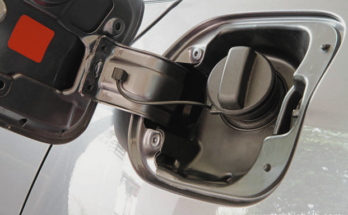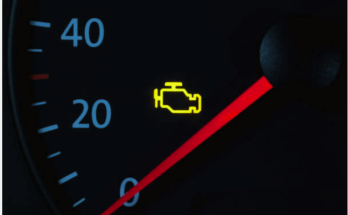In the intricate web of modern vehicle diagnostics, few things can be as concerning as the illumination of the dreaded “check engine” light.
Yet, among the myriad of codes that can trigger this warning, one specific alphanumeric combination stands out: B0026. This code, nestled within the realm of the car’s airbag system, carries weighty implications for driver and passenger safety.
The B0026 Diagnostic Trouble Code (DTC) is a digital breadcrumb left by your car’s onboard diagnostic system, signaling a potential issue within the driver-side airbag deployment system. As the primary safeguard against collision-related injuries, the airbag system’s integrity is paramount.
Therefore, understanding the nuances of the B0026 code is not just a matter of deciphering technical jargon but a crucial step toward ensuring the safety and reliability of your vehicle.
In this article, we will discuss the Diagnostic Trouble Code (DTC) -B0026 code, shedding light on its possible causes, implications, and steps for resolution. Whether you’re a seasoned automotive enthusiast or a novice driver, this exploration promises to arm you with the knowledge needed to navigate the complexities of your car’s airbag system with confidence and clarity.
What is DTC Code B0026 in a Car?
The “B0026” code in a car is typically associated with an issue related to the driver-side airbag deployment system. Specifically, it indicates a problem with the driver-side airbag module, such as a fault in the circuit or a malfunction in the module itself. When this code is triggered, it may illuminate the airbag warning light on the dashboard, indicating that there could be a potential safety concern with the airbag system.
It’s important to address any fault codes related to the airbag system promptly, as airbags are critical safety components designed to deploy in the event of a collision to help protect occupants from injury. Ignoring or neglecting such codes could compromise the effectiveness of the airbag system and pose a risk to the safety of the driver and passengers.
To resolve the “B0026” code, it’s recommended to have the vehicle diagnosed by a qualified mechanic or automotive technician. They can use specialized diagnostic tools to pinpoint the exact cause of the issue and perform the necessary repairs or replacements to restore the proper functionality of the driver-side airbag module.
Code Description-Driver Frontal Deployment Loop Single Stage or Stage 1 Open
Possible Causes of the DTC Code B0026 in a Car

- The B0026 Diagnostic Trouble Code (DTC) in a car’s airbag system can stem from various underlying issues, each requiring careful diagnosis and resolution to ensure the continued safety and functionality of the airbag system. Understanding the possible causes of the B0026 code is crucial for effectively addressing the problem. Let’s explore some of the common culprits behind this diagnostic code:
- Faulty Driver-Side Airbag Module: One of the primary causes of the B0026 code is a malfunction within the driver-side airbag module itself. This module contains crucial components responsible for deploying the airbag in the event of a collision. A damaged or defective component within the module, such as a faulty accelerometer or inflator, can trigger the B0026 code.
- Open or Short Circuit: Wiring issues are another frequent cause of the B0026 code. An open or short circuit in the wiring harnesses connected to the driver-side airbag module can disrupt the flow of electrical signals and communication between the module and the vehicle’s onboard diagnostic system. These wiring issues may result from wear and tear, corrosion, or physical damage to the wiring harnesses.
- Loose Connections: Loose or improperly connected wiring connections, connectors, or terminals related to the airbag system can also lead to the generation of the B0026 code. Over time, vibrations and vehicle movements can cause these connections to become loose or disconnected, interrupting the flow of electrical signals and triggering fault codes like B0026.
- Impact or Collision Damage: If the vehicle has been involved in an accident or collision, the driver-side airbag module may sustain damage, resulting in the generation of the B0026 code. Impact or collision damage can compromise the structural integrity of the module or its internal components, rendering it unable to function properly. Even minor collisions can cause hidden damage to the airbag system, necessitating thorough inspection and potential replacement of damaged components.
- Software Glitches: In some cases, software glitches or calibration issues within the vehicle’s airbag control module (ACM) may cause erroneous fault codes like B0026 to be generated. These software-related issues can arise due to programming errors, compatibility issues, or communication failures between the ACM and other onboard systems. Updating the software or recalibrating the ACM may be necessary to resolve such issues.
Addressing the B0026 code requires a systematic approach, beginning with thorough diagnostic procedures to pinpoint the underlying cause of the fault.






